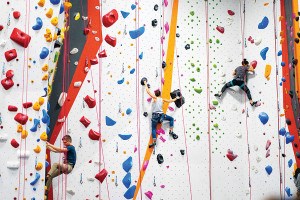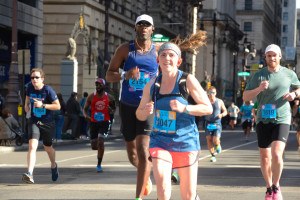Five Most-Hated Exercises
Can I be totally honest with you for a second? There are certain exercises I absolutely hate. I dread them. I avoid them. And when I actually force myself to do them, I—gasp—will often cheat.
It dawned on me that some of you are probably in the same boat (right? anyone?). So I asked Platoon Fitness trainer Mike Smaltz which moves his clients complain about most.
“The moves people hate are the ones where there’s a lot going on,” says Smaltz, a trainer of 20 years. “We call them multi-jointed exercises, ones that raise heart rate, increase intensity, and are extremely wearisome.” Examples? Burpees and mountain climbers—which just so happen to be my two chief nemeses.
I asked Smaltz to name the top five most-complained-about exercises and to offer tips for modifications to make them a little less, well, miserable. He says to stick with the modified moves for a few weeks to allow your body to build up the strength and endurance needed to tackle the exercises full out.
“Most full body movements are very uncomfortable. It hurts to be fit,” he says. “Do a few reps every day, and before you know it, it won’t be so hard anymore.”
Burpees
Why do it? Burpees work a range of head-to-toe muscles, including lower back, chest, shoulders, triceps, hamstrings, glutes, and abs, to name a few. They also raise your heart rate, incorporating cardio work into a strength exercise.
Modification: Bending at the waist, place hands on the ground and, instead of popping your legs back, step back into high plank. Then, walk feet back in, stand up, and clap hands over hand. The modified move eliminates the jump at the end and makes the movement more controlled.
Mountain Climbers
Why do it? The rapid-fire in-and-out movement of the legs raises your heart rate fast. The move also works the chest, shoulders, triceps, and the core.
Modification: Instead of the quick leg movement, step the feet in and out, keeping a consistent rhythm. “This is great for a group-training session when one or two people can’t quite do the move,” says Smaltz.”You still get the range of movement, which means you can continue with the workout without feeling excluded.”
Perfect Pushups
Why do it? Lots of people do pushups—but many do them incorrectly. A “perfect” pushup means maintaining perfect body position: head down; hands evenly spaced and under the shoulders; a flat, tabletop back with a slant from the hips to foot. Doing it right means working the chest, triceps, shoulders, and core. “When I get done doing pushups my butt is sore,” says Smaltz. “That’s a clue I’m doing it right.”
Modification: Drop the knees to the floor, but keep the butt in line—don’t let it pop up. Or, spread your feet wider so your toes are further apart, giving you a wider center base and lending a bit more stabilization.
Pike
Why do it? Often performed on a stability ball, the pike mainly works the abs but also burns the hamstrings, glutes, and even shoulders.
Modification: Ditch the ball. Put yourself into a plank position and, walking on the toes, bring your feet in, keeping your knees stiff (but not locked). Then walk the hands forward until you’re back into a plank position. The modified move is called the inchworm.
Tuck Jump
Why do it? This super dynamic move raises the heart rate while working the core, butt, and legs. You’ll notice improved power in the legs and abs if you stick with it.
Modification: Keep hands on the head to elevate heart rate as you march in place, bringing knees high above the waistline. You can make it a little harder by marching in place—raising the left knee, then right knee—then dropping into a squat. Repeat.
What are your least favorite moves? Tell us in the comments.


